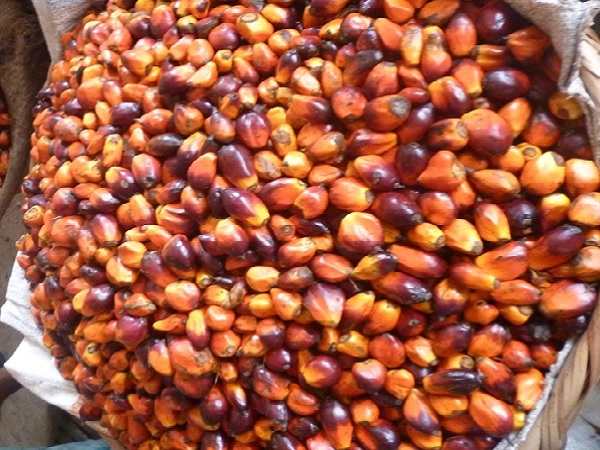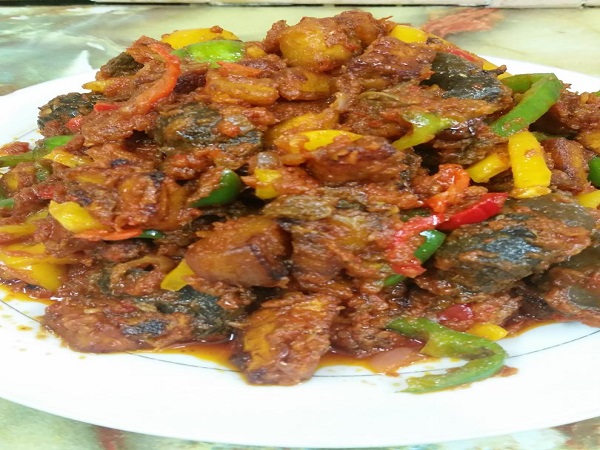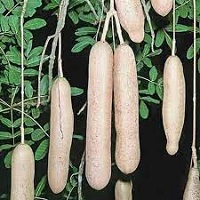4 Simple Ways Of Extracting Palm Oil At Home And Health Benefits
Palm oil, popularly known as virgin palm or red oil has been in existence for many years.
This oil is derived from the oil palm tree, Elaeis Guineensis.
Palm oil is one of the most used vegetable oils all around the world.
The oil is extracted from the fruit of the palm tree. Palm fruit is oval shaped with an outer red fleshy fruit used for making palm oil.
Palm oil extraction is an easy activity that you can engage from the comfort of your home particularly when you have the right quantity of palm fruits needed.
HOW TO EXTRACT PALM OIL
Items Required:
Palm fruits
Bowl
Pot
Chiffon cloth
- METHOD
Wash and boil the palm nut fruits until they become tender. This can take up to half an hour depending on how many palm nut fruits you have. The flesh of the fruits has to be soft and supple. - Drain with a sieve and pound the fruits in a mortar and pestle or you can use your hands to mash it in a bowl. Do not break the nut while pounding, but grind the palm nuts with the pestle so the juices flow out of it.
- Take out the seed (it’s easier to extract the oil without the seeds) and use hand to squeeze out the oil using the cheesecloth.
- As you boil the palm nut fruit juice, the oil will separate and float on the surface.
Also Read: Great Nutrients ‘Ukwa’ In Your Diet Can Give You

5 Benefits of Palm oil to the body
- Palm oil’s red colour is an indication that it has a high concentration of beta-carotene which has various health benefits and may reduce the development of cataracts, safeguard the skin against sunburn and aid in preventing macular degeneration.
- Palm Fruit Oil has many health benefits over different varieties of cooking oils because of its ability to be used in any recipe. It hardly spoils and is nutritionally balanced to maintain the flavor of food and is less likely to be absorbed into food when frying. Red palm oil is the cooking oil alternative for chefs globally.
- Palm oil is rich in Vitamin E and no other vegetable oil can be compared to its richness. The presence of tocotrienols, vitamin E, and carotenes in palm oil can help keep the skin in good condition by protecting it from harmful ultraviolet rays. Palm oil supports boosting of hormonal balance and the vitamins in it also assist in stopping vitamin deficiencies in pregnant women and children.
- Palm oil has the anti-inflammatory and cholesterol-reducing qualities and can reverses atherosclerosis – a disease of the arteries characterised by the deposition of plaques of fatty material on their inner walls.
- Palm oil is also rich in fatty acids and fat-soluble micronutrients like Carotenoids. Fatty acids are the building blocks of the fat in our bodies and in the food we consume. The body breaks the fats down into fatty acids during digestion, which can subsequently be absorbed into the blood while the micronutrients keep the body cells healthy and functioning properly.
Uses Of Palm Oil
The use and spread of palm oil that is obtained from palm fruit are beyond imagination;
- From cooking oil and manufacturing of margarine to non-dairy creamers, ice cream, soap and detergents to pharmaceuticals and cosmetic uses.
- In addition, it is used in the production of greases, lubricants and candles. Its global consumption may have increased more than any other goods.




This site is educative, keep it up, we need more of this in our country.
Pingback: Canarium Schweinfurthii (African Elemi) Benefits - 9jafoods
Pingback: How to Bleach Palm Oil for Cooking and Side Effects - 9jafoods
Sorry for replying late. for best result it’s good to blend the two separately:
• Pour in the blended tomatoes, red pepper and tatashe, ginger and garlic, and other ingredients of choice and cook for about 5 minutes.
• After that, add the boiled chicken and chicken stock or any protein of preference and leave to simmer
• Lastly, add the blended carrot, stir and leave to cook for about 2 to 3 minutes.
At a glance, you will not be able to guess that this stew has any carrot in it because it looks just like the tomatoes and pepper stew that we usually make in Nigeria,